Director – Adam Wingard – 2024 – US – Cert. 12a – 115m
*****
Godzilla must leave the surface world to team up with Kong in the subterranean Hollow Earth below to defeat a powerful enemy – out in UK cinemas on Friday, March 29th
The latest movie in the Toho / Warner Bros. Godzilla / Kong Monsterverse is globetrotting in scope, with scenes of monsters wreaking havoc in Rome and Rio; its central conceit is that Godzilla roams the surface of the Earth fighting off other monsters which humanity would be unable to see off alone, while Kong, reconceived as a similar size to Godzilla, lives in the subterranean paradise of Hollow Earth.
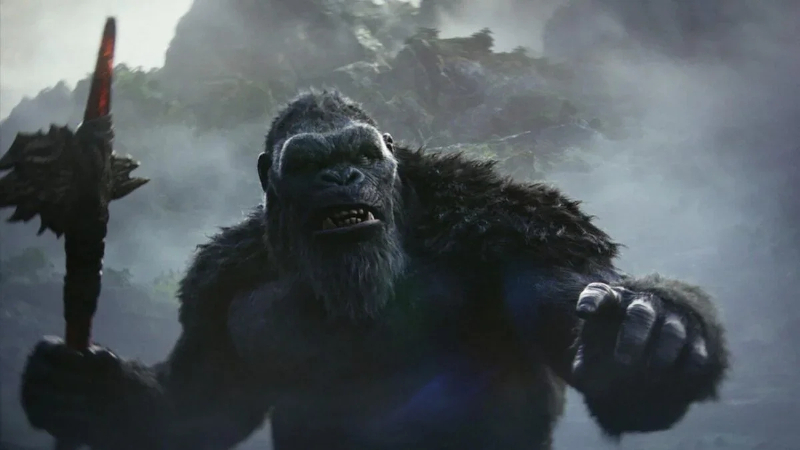
With one beast on the outer rim of the planet and the other in a world beneath its surface, there is no possibility one will run into the other, which fight would be devastating for mankind. To make sure the two monsters remain isolated from one another, the huge Monarch organisation monitors both constantly.
Yet a terrible force is on the ascendant in Hollow Earth, one that neither Kong nor Godzilla would be able to contain let alone defeat on their own. And so, to save humanity, they must join forces and fight it.
The monster fight scenes are spectacular from the get-go. Kong has a run in with a pack of giant hyena-like wolves while nursing toothache. He climbs out of the centre of the earth and onto the shore to rest near a Monarch research facility co-ordinating monitoring his movements from observation stations in Hollow Earth. Humans send machines to sedate him, then helicopters with a rig carrying Trapper (Dan Stevens) who removes the offending tooth and replaces it with an artificial one.
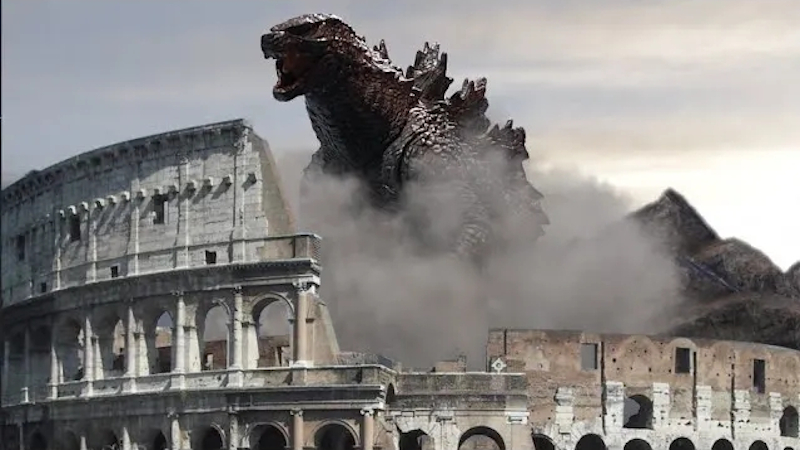
Godzilla naps curled up in the Coliseum in Rome only to wake and fight something that looks like a giant spider crab with Cthulhu-like mouth tendrils, before going back to sleep in the same space afterwards. There’s something quite endearing about Godzilla sleeping like this – the idea apparently came from director Wingard seeing his cat curled up on the bed – which somehow sits side by side with the notion of the wakened Godzilla as a terrifying harbinger of mayhem breathing nuclear fire. A kitten when asleep, a fearsome monster when awake.
Returning to his lair, Kong discovers other apes, led by feared despot the Skar King and including the deceptively cute but in fact quite dangerous brat Suko, who after getting off to a bad start becomes a sort of surrogate son of Kong.

Sensing a terrible adversary deep in the planet, Godzilla visits a French nuclear plant and absorbs as much radiation as he can to store up as fuel for a future conflict.
Earlier Monsterverse entries such as Godzilla King of the Monsters (Michael Dougherty, 2019) put the huge Titan characters on the screen but treated the human characters almost like throwaway extras, producing rotten movies punctuated with awe-inspiring monsters and special effects. US-dubbed versions of Japanese kaiju pictures (which grate with lovers of original language world cinema, where subtitles for non-native speakers are the exhibited norm), and many of the US-made Godzilla blockbusters, have effectively turned this shortcoming into a staple component of the Westernised kaiju genre.
Along with the current film, non-Monsterverse entry Pacific Rim (Guillermo del Toro, 2013) are rare exceptions which break this unfortunate mould. Director Adam Wingard cares as deeply about his human characters as he does about Kong, Godzilla and the other gigantic creatures here.
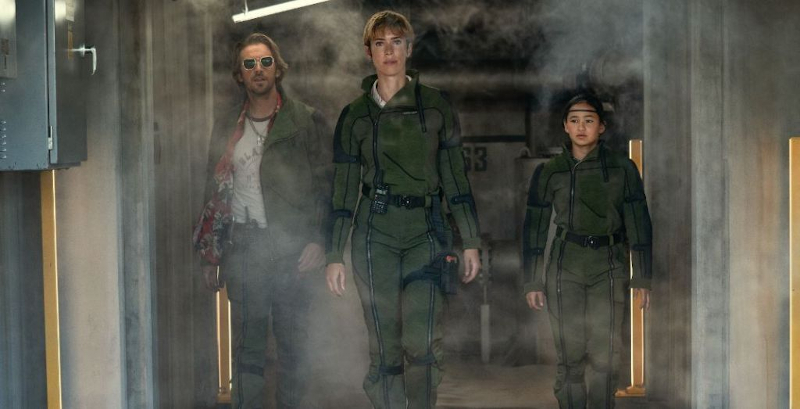
Chief among these humans is Dr. Ilene Andrews (Rebecca Hall) whose adoptive daughter Jia (Kaylee Hottle) is the last survivor of Skull Island’s Ivi tribe whose indigenous culture is so alien that she is failing to integrate into the school in which Ilene has placed her. When Jia obsessively draws three slashes over and over in class and Monarch’s monitor printer outputs produce similar looking readouts, Ilene takes a small crack team of her daughter, Trapper, Titan-obsessed podcaster Bernie Hayes (Bryan Tyree Henry) and grizzled military type Mikael (Alex Ferns) down through a waterhole off the coast into Hollow Earth.
The film is as interested in the mother daughter relationship between Ilene and Jia as it is in the wordless, father-surrogate son relationship between Kong and Suko. There’s never the feeling that when we’re with the human actors, we’re missing the main event, which for a Western Godzilla movie is quite an achievement.
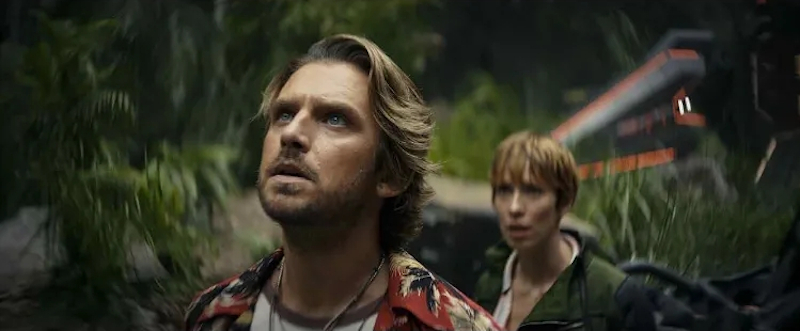
In Hollow Earth, the explorers find man-eating plants (or rather, the man eating plants find them!) and an Ivi-related tribe led by a queen (Fala Chen) who communicate by telepathy, a cross between the blue-skinned natives of Avatar (James Cameron, 2009) and the native islanders of King Kong (Merian C. Cooper, Ernest Shoedsack, stop-motion animation and effects: Willis O’Brien, 1933). The latter movie, a landmark in stop-motion animation / live action special effects composite, is generally held in higher regard than most subsequent Kong or giant ape films. The jungle and the tribe also recall the diminutive island natives of Mothra (Ishiro Honda, 1961), whose eponymous giant moth also puts in an appearance.
The journey of the human explorers through Hollow Earth recalls the journey of the explorer through the jungle built for the original 1933 film, even though much of the scenery in the new film was shot in the very real jungles of the Daintree rainforest in Queensland, Australia. A great deal of time is spent in the Hollow Earth jungle, affording the audience the opportunity to see a considerable amount of the place, just as 1933’s King Kong did with its jungle constructed on the Studio lot. Further nods to that movie include, to name but two: Kong’s cave lair halfway up a mountain, and a sea serpent Kong fights (and eats a tasty meal-sized section of afterwards) recalling the elasmosaurus that coiled around his neck in combat.
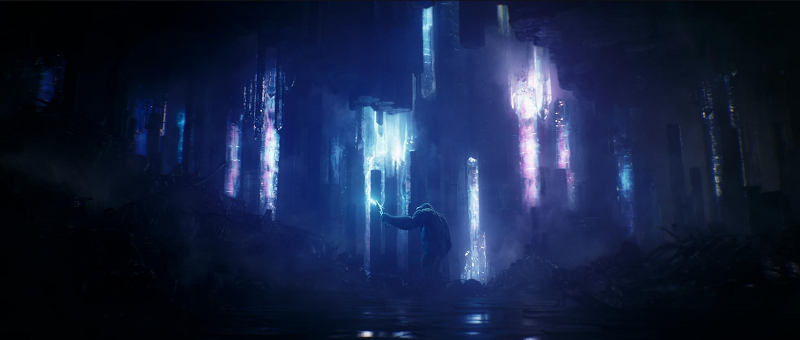
Marshalling a clearly huge arsenal of resources that would (and does) defeat many directors who make this sort of movie, Wingard shows a remarkable ability to keep everything under his control, make the CG characters work on as believable, motivated characters and realise a very specific vision, even if that’s largely one of non-stop action and mayhem rather than anything especially deep. There is so much going on it can be more than a little overwhelming at times, but it’s the sort of movie that if you enjoy it, you might want to go back and see again and again on a big screen if the opportunity arises. Its emphasis on action and adventure may eschew the deeper and darker cultural overtones of the strongest Japanese Godzilla films (Godzilla, Ishiro Honda, 1954; Shin Godzilla, Hideaki Anno, Shinji Higuchi, 2016, Godzilla Minus One, Takashi Yamazaki, 2023), but as a none too deep, otherworldly, escapist, fight-laden, action adventure romp, it knocks spots off most of the previous American Godzilla movies. See it on the biggest screen you possibly can.
Godzilla x Kong The New Empire is out in cinemas in the UK on Friday, March 29th.
Trailer:
Trailer 2:
Tickets on sale trailer:
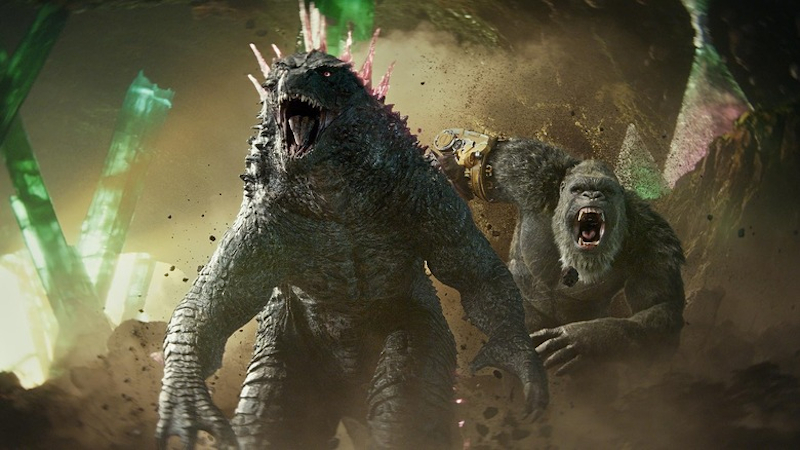
2 replies on “Godzilla x Kong
The New Empire”
Enjoyed the review Jeremy, and enjoyed the screening too. My review has been published on The Indiependent if you wanted to read!
Thanks: I’ve taken the liberty of posting the link here:
https://www.indiependent.co.uk/godzilla-x-kong-the-new-empire-review-bonkers-escapism/